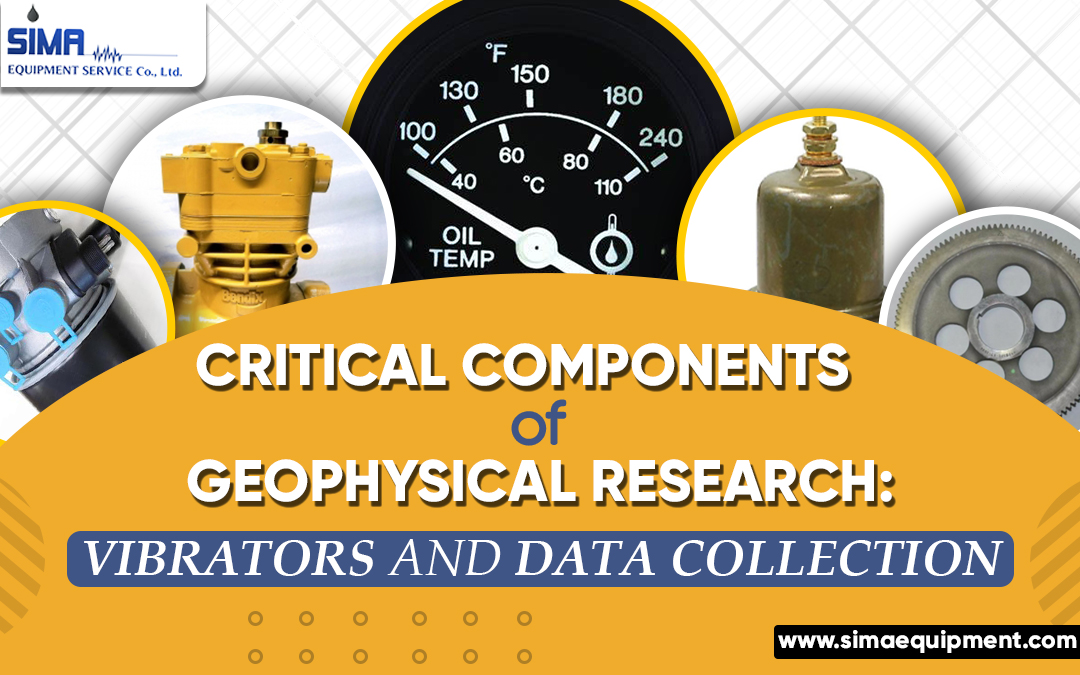geophysical equipment for sale
Critical Components of Geophysical Research: Vibrators and Data Collection
Geophysical research might not sound like the most exciting topic at first, but it’s a field filled with fascinating tools and techniques that help us uncover the Earth’s hidden secrets. One of the unsung heroes in geophysics is the Geophysical Vibrator, and in this article, we will explore how these machines, along with cutting-edge data collection methods, are changing how we understand our planet.
Vibrators: More than Just a Rhythm Section
- The Lowdown on Geophysical Vibrators
Geophysical vibrators are not what you might expect. They aren’t rock ‘n’ roll instruments, nor are they massage gadgets. These specialized machines are pivotal in geophysical research, and they have nothing to do with good vibrations and everything to do with Earth’s vibrations.
- Earth-Shaking Technology
Vibrators, more formally known as seismic vibrators, create seismic waves that travel through the Earth’s subsurface. It is how geophysicists collect valuable data about the Earth’s composition and structure. It’s more complex than turning up the volume on your stereo, but it’s equally mind-boggling.
- How They Work
Seismic vibrators work by exerting force on the ground at various frequencies. It generates seismic waves that travel deep into the Earth and bounce back when they encounter different rock layers. The time it takes for these waves to return to the surface is recorded and analyzed to create subsurface images.
- Environmentally Friendly Vibrations
One of the marvels of geophysical vibrators is their eco-friendly nature. Unlike explosive sources used in the past, which could harm the environment, vibrators generate seismic waves with minimal environmental impact. It means that geophysical research can be done while minimizing harm to the Earth’s surface.
Data Collection: The Treasure Hunt Begins
- The Digital Gold Rush – Data collection in geophysical research is akin to a treasure hunt. It’s about gathering the invaluable nuggets of information that help us decipher what’s happening beneath the Earth’s surface. Modern technology has turned this quest into a digital gold rush.
- High-Tech Sensors – Collecting data in geophysical research involves a fleet of high-tech sensors. These sensors are placed strategically to capture the seismic waves generated by the vibrators. They record the tiny wiggles and jiggles caused by these waves, which are key to understanding the Earth’s mysteries.
- Gigabytes and Gigabytes – The amount of data collected during a geophysical survey can be mind-boggling. We’re talking about gigabytes of information streaming in from various sensors. High-performance computing and advanced algorithms are deployed to make sense of the seismic puzzle.
Geophysical Equipment: Tools of the Trade
- Seismometers – Seismometers are the workhorses of geophysical research. They come in various shapes and sizes, but their mission is clear: to detect ground motion and translate it into data that scientists can use to create subsurface maps.
- GPS Receivers – Global Positioning System (GPS) receivers are often used with seismometers to precisely measure the location of sensors and the movement of the Earth’s crust. It helps in creating accurate 3D models of the subsurface.
- High-Performance Computers – Behind the scenes of any geophysical research project, you’ll find a powerhouse of high-performance computers. These machines are responsible for crunching the vast amount of data collected and turning it into meaningful insights.
In Conclusion: A World of Discovery
Geophysical research, driven by geophysical equipments and sophisticated data collection, is a world of endless discovery. It’s an exciting journey that helps us understand our planet better, all while being mindful of its well-being. So, the next time you hear about geophysical research, remember that it’s not just about what’s on the surface; it’s about the remarkable world that lies beneath our feet.

